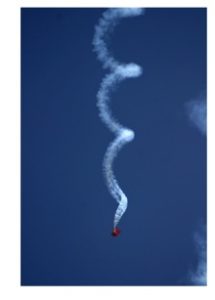01 May 2014 New ObamaCare Enrollment Report Shows Death Spiral Is Likely
 HHS has just released the latest enrollment report for the ObamaCare exchanges. A few notable statistics:
HHS has just released the latest enrollment report for the ObamaCare exchanges. A few notable statistics:
-8,019,763 people have signed up for a plan on the exchanges.
-About 3.8 million of those signed up in the last month of the enrollment period.
-2.2 million (28 percent) of the people who selected a Marketplace plan during the initial open enrollment period were young adults between the ages of 18 and 34.
-47 percent of the total number of people who selected a Marketplace plan and 52 percent of the young adults (ages 18-34) who selected a Marketplace plan did so during the last month of the initial open enrollment period
Let’s first focus on those last two bullet points. Sign-ups of the crucial 18-34-year-old cohort jumped from 25% in early March to 28% at the end of the enrollment period. That’s not a surprise given that young people are likely to be disporportionately represented among people who do things at the last minute. But the fact that over half of that age group chose their plan during the last month should worry ObamaCare supporters. People who are flakey enough to wait until the last minute are probably also flakey when it comes to paying premiums. Thus, that 28 percent number will decline and it will, of course, be no where near the 38 percent the Obama Administration says is needed to keep the risk pools stable. (FYI: The Kaiser Family Foundation says the low number of 18-34-year-olds doesn’t matter much. Seth Chandler says they are wrong.)
While the 18-34-year-old cohort has been dubbed the “young and healthy,” a more accurate moniker might be “young and somewhat healthy.” 68 percent of 18-34-year-olds on the federal exchanges chose a silver plan. As I’ve written previously:
Why does this matter for the death spiral? Because so many enrollees choosing silver plans suggests that the risk pool may be sicker than is optimal. For enrollees at or below 250 percent of the federal poverty level, silver plans tend to offer the most coverage for the lowest price. For persons under 250 percent FPL, ObamaCare offers help with copays and deductibles, but only if the consumer chooses a silver plan. The actuarial value for a silver plan is 70 percent (that is, a silver plan must, on average, cover 70 percent of a policyholder’s medical claims), but when the subsidies for cost-sharing are included, the actuarial value rises to between 73 and 94 percent. As one writer notes, “Why would someone opt for a silver-level plan over a cheaper bronze or catastrophic-level plan? The most plausible explanation is that the enrollee anticipates incurring significant medical expenses over the coming year, which is to say that he’s not healthy.”
Since income tends to be lower the younger one is, a lot of those 18-34-year-olds are probably in that <250 percent FPL range. The inordinate number of 18-3-4-year-olds choosing silver plans suggests that the exchanges have attracted young and healthy people that are not that healthy.
We’ve seen hints that the ObamaCare exchange risk pools are in trouble, from greater use of expensive prescription drugs, to hefty premiums increases coming for 2015. That, along with today’s enrollment report, means the exchanges are poised for a death spiral.



